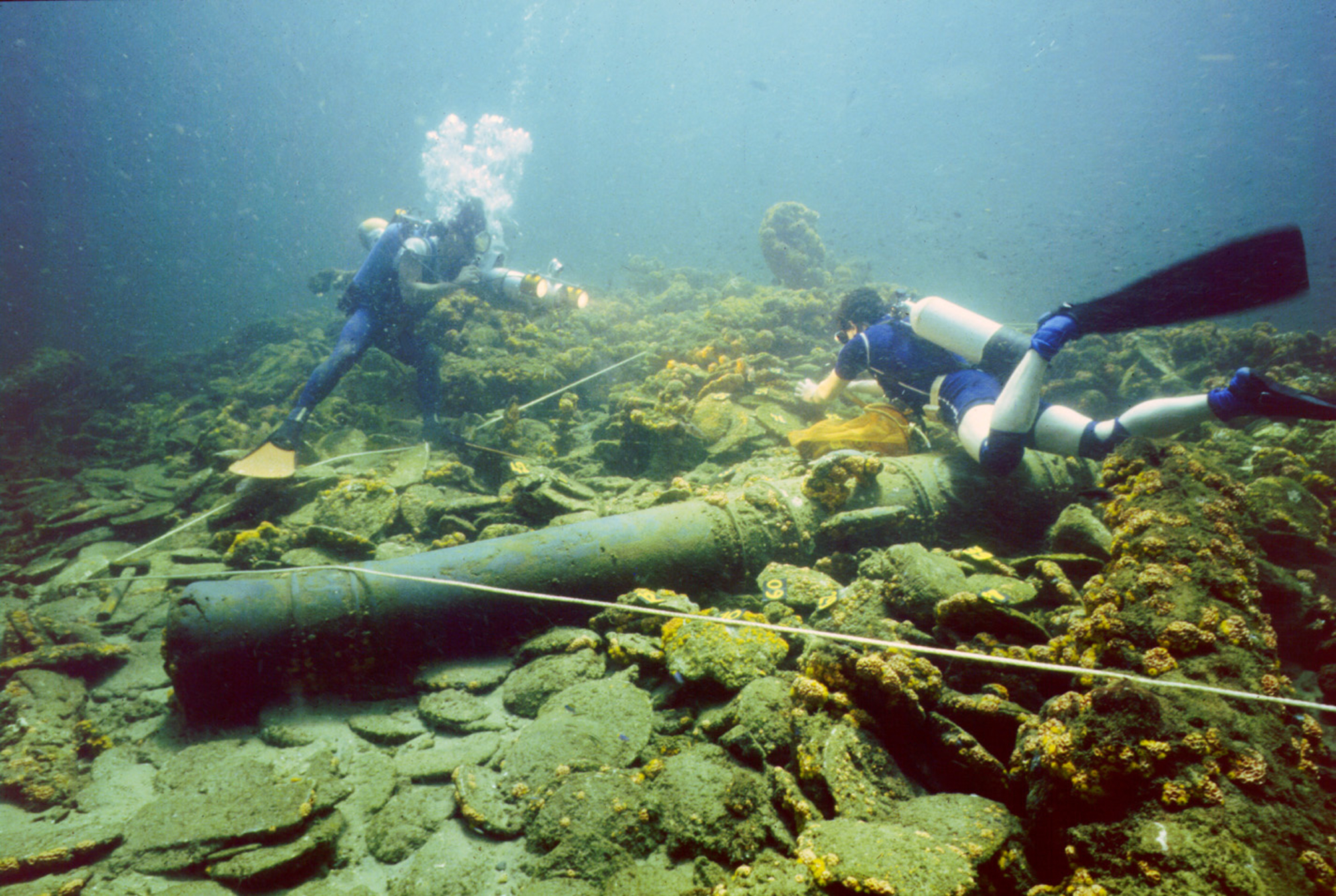
- Home
- A great scientific adventure
- Mauritius, 1609 (Gabon)
The second life of the Mauritius began in 1986 when the oil company Elf-Gabon and the Gabonese Republic sought the help of French specialists to survey and subsequently excavate an archaeological deposit which had recently been discovered at Port-Gentil. She had already suffered the discourtesy of having her bronze bell removed…
Pepper from the East Indies
This merchant ship of the Dutch East India Company (VOC) foundered in 1609 off Cape Lopez, on the coast of present-day Gabon, on the return leg of her second voyage to Asia. She was heading for Amsterdam with a cargo of pepper and zinc, and a small selection of porcelain china.
In 1986, despite the extremely strong currents complicating operations, Michel L’Hour and Luc Long of DRASSM discovered a rich collection of artefacts in the remains of the ship, which was almost forty metres long and some ten metres in the beam.
A memorable excavation
The wreck furnished a large cargo of zinc ingots, each weighing between 1 kg and 13 kg, produced in China… Moving about 20,000 ingots is not easily forgotten… Neither is the sudden appearance in the murky deep of blue and white china porcelain of the Ming dynasty, nor the sight of imposing guns of iron and bronze encased in concretions and orange-coloured stony corals, respectively.
The excavation was an opportunity for French underwater archaeology not only to deploy its expertise in international waters, but also to turn its attention to the wrecks of the early modern period. Being at that time the oldest known wreck of the illustrious Dutch East India Company, the Mauritius became the focus of intense interest from all the specialists of modern maritime history. The excavation and study of the Mauritius remains to this day a key moment in the history of DRASSM.


